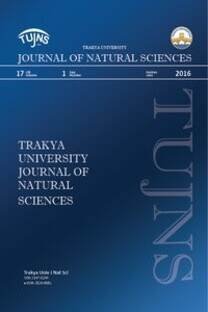ALTIN ORANLA TASARLAMAK: DOĞADA, MİMARLIKTA VE YAPISAL TASARIMDA ? DİZİNİ
Altın Oran, Fi Dizini, Doğadaki Fi Dizini, Sanatta, Mimarlıkta ve Yapısal Tasarımda Altın Oran
DESIGNING BY GOLDEN RATIO:? CODE IN NATURE, ARCHITECTURE AND STRUCTURAL DESIGN
Golden Ratio, Phi Code, Phi Code in Nature, Golden Ratio in Art, Architecture and Engineering,
___
- BERGİL, M., (1993), Doğada/Bilimde/Sanatta, Altın Oran, Arkeoloji ve Sanat Yayınları, 155.
- BORGES, R. F., (2004) The Phi Code in Nature, Architecture and Engineering, Design and Nature-2 Conference, ed:
- Brebbia, C. A., WIT Pres, 401-409
- BOUSSORA, K., MAZOUZ, S., (2004) The Use of the Golden Section in the Great Mosque at Kairouan, Nexus
- Network Journal, vol.6, no.1, 7-16
- CHOWN, M,. (2002), Why Should Nature Have a Favorite Number, NewScientist, 21/28, 55-56.
- COOK, T. A., (1979), The Curves of Life, Being an Account of Spiral Formations and Their Application to Growth in Nature, to Science and to Art. Dover, New York.
- DOCZI, G., 1994, The Power of Limits : Proportional Harmonies in Nature, Art, and Architecture, Shambhala Publications,
- DUNLAP, A,. 2003, The Golden Ratio and Fibonacci Numbers World Scientific Press.
- FLETCHER, R., (2001), Palladio’s Villa Emo: The Golden Proportion Hypothesis Defended, Nexus Network Journal vol.3, no.2, 105-112.
- FRINGS, M., (2007), The Golden Section in Architectural Theory, Nexus Network Journal vol. 4 no. 1, pp. 9-32. http://www.emis.de/journals/NNJ/Frings.html
- GHYKA, M., (1977), The Geometry of Art and Life Dover Publications, New York.
- HEMENWAY, P., (2005), Divine Proportion: Phi in Art, Nature, and Science. Sterling Publishing, New York, 20– , 127–129.
- HUNTLEY H. E., (1970), The Divine Proportion, Dover Publications.
- JEAN, R. V., (1994), Phyllotaxis: A Systematic Study in Plant Morphogenesis. New York: Cambridge University Press.
- LAWLOR, R., (2002), Sacred Geometry: Philosophy and Practice, Thames and Hudson, London, 53-60.
- LIVIO, M., (2002), The Golden Ratio: The Story of Phi, The World's Most Astonishing Number. New York: Broadway Books.
- MAINZER, K., (1996), Symmetries of Nature: A Handbook for Philosophy of Nature and Science, Walter de Gruyter,199–200.
- STERNE C., (2008), Blueprints of the Cosmos http://www.world-mysteries.com/newgw/sci_blueprint1.htm
- MARK, L., (1991), The Biology of the Honey Bee, Harvard Unv. Press, ,s. 81.
- OLSEN,S., (2006), The Golden Section: Nature's Greatest Secret, Walker & Company.
- PEARCE, P., (1978), Structure in Nature is a Strategy for Design, MIT Press.
- POSAMENTIER, A., (2007). The Fabulous Fibonacci Numbers, Prometheus Books, New York.
- READING, N., Dynamical Symmetries: Mathematical Synthesis between Chaos Theory (Complexity),Fractal Geometry, and the Golden Mean, Architectural Design 64, 11/12 (1994): xii-xv.
- SCHOLFIELD, P.H., (1958), The theory of Proportion in Architecture, Cambridge University Pres, xx
- SKINNER, S., (2006), Sacred Geometry: Deciphering the Code, Octopus Publishing, London, 44-45
- STERNE C., (2008) Blueprints of the Cosmos http://www.world-mysteries.com/newgw/sci_blueprint1.htm
- Von FRISCH, K,. (1974), Animal Architecture, Harcourt, Brace Jovanavich, Inc., NY.
- WEIS, G., (2002), Golden Hexagons, Journal for Geometry and Graphics Volume 6, No. 2, 167-182.
- WINSTON, M,. (1991), The Biology of the Honey Bee, Harvard Unv. Press.
- ISSN: 1305-6468
- Yayın Aralığı: 1
- Başlangıç: 2000
- Yayıncı: -
GÜNEŞ IŞIĞININ GÜNEŞ HAVUZUNDA DEPOLANMASININ TEORİK OLARAK İNCELENMESİ
Sevinç MANTAR, Mehmet KARAKILÇIK
CHAOTIC SYNCHRONIZATION METHODS BASED ON STABILITY ANALYSIS OF LINEAR SYSTEMS
EDİRNE İLİNDE OPTİMUM DUVAR YALITIM KALINLIĞININ ENERJİ TASARRUFUNA ETKİSİ
Zeynep Dilek ADA, Ayşegül ÇERKEZKAYABEKİR
BENTONİT ÜZERİNE KOBALT VE NİKEL’İN ADSORPSİYONU VE DESORPSİYONU
Aytaç GÜLTEKİN, Yıldız AKTAŞ, Hilmi İBAR
Tarihi Kırkpınar’da Uygulanan Bazı Tekniklerin Analizine Biyomekanik Yaklaşım
MİNERALOJİK KATKILARIN ÇEŞİTLİ TANIMLARI, SINIFLARI, ÖZELLİKLERİ ve KULLANIM ALANLARI
EDİRNE İLİ UZUNKÖPRÜ İLÇESİ YENİKÖY BELDESİ BAĞCILIK YAPISININ İNCELENMESİ
İlknur KORKUTAL, Elman BAHAR, Hasan Ali ERKAN
ALTIN ORANLA TASARLAMAK: DOĞADA, MİMARLIKTA VE YAPISAL TASARIMDA ? DİZİNİ
